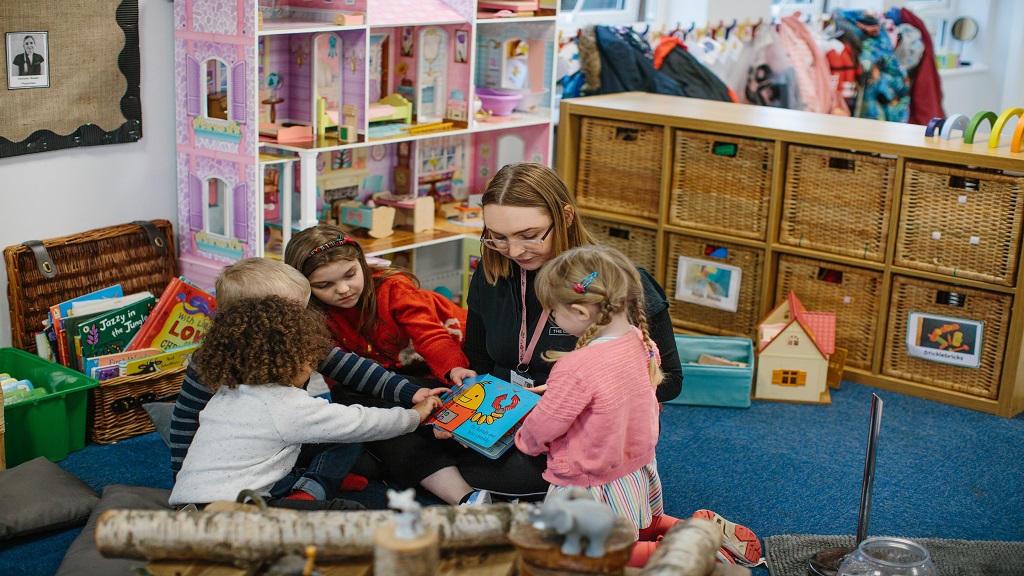Family First are big advocates of team members completing apprenticeships and learning while they earn, with more senior staff now…
Changes to childcare ratios: what impact will this have on providers and how can software help?
Earlier this year, the Chancellor announced that from September 2023 onwards, early years providers within the UK would have the option to change their staff-to-child ratios from 1:4 to 1:5.
Despite widespread opposition from parents and practitioners to the proposed increase, this change to the EYFS (Early Years Foundation Stage) has still been implemented. In response to the consultation, 70% of settings said they would be unlikely to change their ratios for two-year-olds. So what does this mean for UK nurseries and childminders, and how will the recent alterations affect them in the long term?
It’s clear the UK government is aware of the need to offer direct support to nurseries, rather than just increasing funding to local councils. Although, from a safety perspective, nurseries are unlikely to implement this ratio change straight away, especially if it leads to them being unable to offer the same quality care.
Chris Reid, chief executive of Connect Childcare, delves deeper into the potential impact this change will have on practitioners, as well as the financial implications for nurseries.
The impact on early years providers
Providers struggling to make ends meet may not be in a position to alter their ratios, as they’ll more than likely have to lower costs for parents and they may not have the sufficient uptake when offering funded places. Furthermore, if they aren’t receiving the full rate for funded childcare places at their setting, the alteration to ratios would put them at even more of a disadvantage in the long term.
Although, on the other side of the coin, the increased ratio will have given some settings the flexibility to increase their cohort intake for this current academic year, as well as offer childminders the opportunity to look after more than three children in their care — * if they’re caring for siblings of children that already attend, or if a place is filled by their own baby or child.
However, questions have been raised as to how beneficial this exercise is in cutting costs for UK nurseries — not only does it put practitioners under additional pressure, but it raises further safeguarding concerns too.
Alongside this talented individuals are continuing to leave the sector in droves, especially post-pandemic. Work needs to be done to reposition the sector as an industry that provides education in the early years, not just ‘babysitting’ so parents can continue to work. More needs to be done to help remove the barriers to entry, otherwise UK nurseries will continue to struggle to recruit those with a wealth of experience.
How can technology be an effective tool for early years settings?
While technology alone can’t solve all the problems the sector is currently facing, nursery management software can help to alleviate some of the more administrative pressures practitioners and managers face.
With the new ratios now in play, technology can help automate lengthy tasks that would have otherwise been done on paper. Setting, communicating, and updating employee rotas for example – especially if your nursery group has multiple sites – can be dealt with much easier when managers have access to one digital system.
Not only does this help settings become more streamlined, it ensures practitioners can focus on what they do best — developing the children in their care and ensuring their emotional and physical needs are met.
Most importantly, nursery management software works to centralise a setting’s child records, learning journals, and parent communications, helping providers to offer a holistic learning experience.
While technology can help early years settings to offer a better service to children and parents, the government must continue to work towards allocating adequate funding for the sector.
Staff recruitment and retention continue to be an issue in the industry however the government must recognise the wider impacts the ratio alteration will have on from not just a financial perspective, but a safeguarding one, too.
Ultimately, providers will know what’s best for the children in their care. As long as the ratio adjustment remains optional, practitioners can continue to work the ways that are best for them, enabling them to provide the utmost best service possible to children and parents.
Latest Features
NMT takes the temperature of the early years market and offer tips for marketing, launching a new nursery, and utislising…
In this leadership series, NMT speaks to Gareth Degenhart, founder and managing director, The Lime Trees What has been your…




